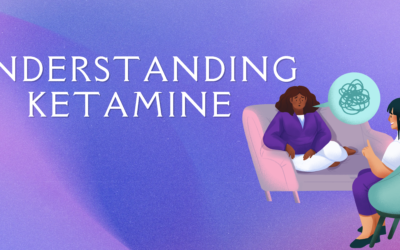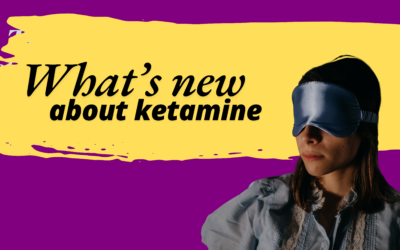Understanding Contraindications for Ketamine Therapy: Sublingual and Intranasal Administration
Ketamine therapy has gained recognition as an effective treatment for various mental health conditions, including depression, anxiety, PTSD, and chronic pain. As the use of ketamine has expanded in both clinical and at-home settings, it’s crucial to understand not only the benefits but also the potential contraindications that could affect a patient’s safety and outcome. In this blog, we will explore contraindications for ketamine therapy, with a specific focus on sublingual and intranasal ketamine.
What Are Contraindications?
Contraindications are specific situations where a drug, procedure, or treatment should not be used because it may be harmful to the patient. These conditions or circumstances may be related to pre-existing health conditions, drug interactions, or even certain lifestyle factors. Recognizing contraindications helps healthcare providers minimize risks and ensure that ketamine therapy is both safe and effective for each individual.
General Contraindications for Ketamine Therapy
Before diving into the specifics of sublingual and intranasal administration, let’s review the general contraindications for ketamine therapy.
- Cardiovascular Issues
Ketamine can increase heart rate and blood pressure, making it potentially harmful for individuals with cardiovascular diseases such as hypertension, arrhythmias, or a history of stroke. - Hypertension: Since ketamine can raise blood pressure, patients with poorly controlled hypertension are at higher risk for complications.
- Heart Disease: Those with heart disease, heart failure, or coronary artery disease should consult their healthcare provider before considering ketamine therapy.
- History of Substance Abuse
While ketamine itself has a lower addiction potential compared to opioids, its dissociative properties can lead to misuse, especially in individuals with a history of substance abuse. Patients with prior substance use disorders should be closely monitored or considered for alternative treatments. - Schizophrenia and Psychotic Disorders
Ketamine’s dissociative and hallucinogenic effects can exacerbate symptoms of schizophrenia and other psychotic disorders. This makes it a contraindication for individuals with a history of these mental health conditions. - Pregnancy and Breastfeeding
The effects of ketamine on fetal development or breastfeeding infants are not fully understood. Given the potential risks, ketamine therapy is generally not recommended during pregnancy or breastfeeding unless explicitly cleared by a healthcare provider. - Uncontrolled Hyperthyroidism
Uncontrolled hyperthyroidism can increase the likelihood of adverse cardiovascular reactions when taking ketamine. Patients with this condition should ensure their thyroid levels are stabilized before undergoing ketamine treatment. - Specific Contraindications for Sublingual Ketamine
Sublingual ketamine is a method where the drug is absorbed through the tissues under the tongue, leading to a slower onset and a gentler dissociative effect compared to intravenous or intramuscular administration. However, this method comes with its own set of contraindications.
- Oral Health Issues
Since the sublingual route requires ketamine to be held in the mouth, individuals with sores, infections, or other oral health issues may experience discomfort or delayed absorption. In severe cases, the medication may not be absorbed properly, reducing its efficacy. - Reduced Liver Function
Sublingual ketamine is metabolized primarily through the liver. Patients with liver impairment may not process the drug efficiently, leading to higher blood concentrations and a greater risk of side effects such as prolonged sedation or increased dissociation. - Hypersalivation or Dry Mouth
Excessive salivation can wash away the sublingual ketamine, reducing the absorption and overall effectiveness of the treatment. On the other hand, dry mouth may cause discomfort and delay in dissolving the drug under the tongue. - Patients with Allergies to Ketamine
Though rare, some individuals may have an allergic reaction to ketamine. Signs of an allergic reaction include rash, itching, swelling, severe dizziness, and difficulty breathing. This contraindication applies regardless of the method of administration, but it’s especially relevant in sublingual ketamine, where the drug is held in contact with mucosal tissues for extended periods. - Patients on CYP450 Inhibitors
Ketamine is metabolized in the liver by cytochrome P450 (CYP450) enzymes. Certain drugs like erythromycin, cimetidine, and ketoconazole are CYP450 inhibitors and can slow the metabolism of ketamine, leading to prolonged effects or toxicity. Patients on such medications may need an adjusted ketamine dosage or alternative treatments.
Specific Contraindications for Intranasal Ketamine
Intranasal ketamine offers an alternative to intravenous and sublingual methods, delivering the drug directly into the bloodstream through the nasal passages. While intranasal administration is more convenient and faster-acting, it also presents a unique set of contraindications.
- Chronic Sinus Problems or Nasal Blockage
Individuals with chronic sinus issues, nasal polyps, or frequent congestion may experience difficulty with the absorption of intranasal ketamine. The drug needs to be absorbed through the nasal mucosa, and any obstruction can impede this process, reducing its effectiveness. - Nasal Infections or Irritations
Intranasal ketamine can cause irritation to the nasal passages, especially in individuals with pre-existing infections, inflammations, or ulcers. Patients should ensure their nasal health is optimal before using this method of administration. - Nasal Trauma or Recent Surgery
Patients who have recently experienced nasal trauma or undergone surgery should avoid intranasal ketamine. The tissues in the nasal passages may still be healing, and the administration of ketamine could interfere with the recovery process or introduce infections. - Frequent Nosebleeds
Those prone to frequent nosebleeds may find that intranasal ketamine exacerbates this issue, especially in higher doses. Patients should consult their healthcare provider to determine if another method of administration is more suitable. - Respiratory Conditions
Conditions like chronic obstructive pulmonary disease (COPD) or asthma may worsen with intranasal ketamine. Although rare, ketamine can cause respiratory depression, and individuals with compromised lung function are at greater risk for this side effect. - Sensitivity to Nasal Irritants
Some patients may experience increased nasal irritation when using intranasal medications. Ketamine’s chemical formulation can cause burning sensations or discomfort in sensitive individuals, making it a less viable option for those prone to nasal sensitivity.
Managing Contraindications: A Personalized Approach
While ketamine has shown remarkable benefits in mental health and chronic pain treatment, understanding and managing contraindications is essential for patient safety. It’s important for healthcare providers to conduct thorough assessments and consider individual factors before initiating ketamine therapy.
Personalized Dosing and Monitoring
- In patients with mild contraindications, such as controlled cardiovascular conditions, it may be possible to administer ketamine at a lower dose or with additional monitoring to ensure safety.
- Sublingual and intranasal methods often require precise dosing, as their effects can vary depending on how the drug is absorbed.
Pre-Treatment Evaluation
- A comprehensive medical history should be taken to identify any potential contraindications. This includes assessing cardiovascular health, mental health history, substance abuse history, and any other relevant conditions.
- For sublingual and intranasal ketamine, specific attention should be given to oral and nasal health, ensuring that patients are not at risk for reduced absorption or irritation.
Communication and Follow-Up
- Patients should be well-informed about potential risks and side effects of ketamine therapy, especially if they have any contraindications.
- Regular follow-ups are essential to monitor for any adverse reactions or changes in the patient’s condition that could introduce new contraindications.
Conclusion
Ketamine therapy, especially in sublingual and intranasal forms, has shown promising results in treating a range of mental health and chronic pain conditions. However, understanding the contraindications for these methods is crucial to ensure safe and effective treatment. Patients should work closely with their healthcare providers to evaluate their individual risk factors, choose the appropriate method of administration, and monitor for any signs of adverse reactions. With a personalized approach, the benefits of ketamine therapy can be maximized while minimizing potential risks.
Understanding Ketamine
Understanding Ketamine: A Revolutionary Treatment for Depression and Beyond In recent years, ketamine has gained significant attention in the medical community, particularly for its promising applications in treating depression, anxiety, and other mental health...
Unpacking Its Transformative Role in Mental Health
Ketamine, originally developed as an anesthetic in the 1960s, has garnered significant attention in recent years for its potential benefits in treating various mental health conditions. This powerful drug, once primarily associated with recreational use and...
Whats new about Ketamine
Once known primarily as an anesthetic and a party drug, ketamine is now gaining significant attention in the medical community for its potential therapeutic applications, particularly in treating mental health conditions. Recent research has focused on its effects on...




